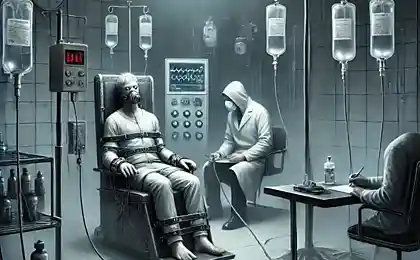939
10 most horrible experiments on humans
Ways of science are quite mrachnymiEksperimenty on humans will always be a controversial topic. On the one hand, this approach allows us to get more information about the human body, which in the future there will a useful application, on the other hand there are a number of ethical issues. The best thing we can do as civilized human beings - is to try to find a balance. Ideally, we need to conduct experiments, causing the person as little as possible harm.
However, the cases from our list - the exact opposite of this concept. We can only imagine the pain experienced by these people - for those who like to play God, they meant no more guinea pigs.
1. Treatment of madness surgical putёm
Dr. Henry Cotton believed that the fundamental causes of insanity are localized infections. Once in the 1907 Cotton became the head of the madhouse in Trenton, he began to practice the procedure called surgical bacteriology them: Cotton and his team have performed thousands of surgical operations on patients, often without their consent. First, they removed the teeth and tonsils, and if this is not enough, the "doctors" take the next step - removed the internal organs, which are, in their opinion, the source of the problem.
Cotton is so believed in his methods that resorted to it even on himself and his family, for example, he removed some teeth to himself, his wife and two sons, one of whom was also removed part of the colon.
Cotton claimed that his treatment was observed when a high percentage of recovery of patients, and that it just became a lightning rod for criticism of those moralists who found it appalling methods. The death of 49-year-colectomy when their patients, for example, Cotton justified by the fact that they have already suffered before the operation "end stage of psychosis." A subsequent independent investigation found that Cotton greatly exaggerated.
After his death in 1933, such operations are no longer carried out, and the point of view of the Cotton sank into obscurity. To his credit, the critics agreed that he was quite sincere in their attempts to help patients, though it did crazy fraudulently.
2. Vaginal surgery without anestezii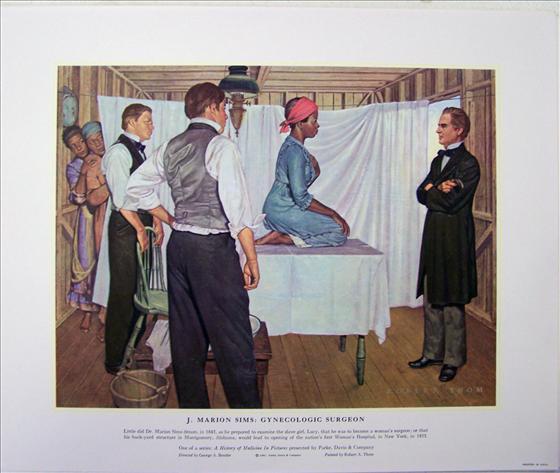
J. Marion Sims, revered by many as a pioneer in the field of American gynecology, in 1840 embarked on extensive research in the field of surgery. As a test, he used several women among the Negro slaves. The study took three years, was focused on the surgical treatment of vesicovaginal fistula.
Sims believed that the disease occurs when abnormal connecting the bladder to the vagina. But, strangely, he performed surgery without anesthesia. One subject, a woman named Anarcha, experienced as many as 30 such operations, which ultimately allowed Sims to prove their case.
It was not only horrific research conducted Sims, he also tried to treat the children of slaves, suffering from lockjaw - spasms of the masticatory muscles - shoemaking using an awl to break down, and then align them to the bones of the skull.
3. Random bubonic chuma
Richard Strong, a doctor and head of the Laboratory of Biological Filipinnskogo Research Bureau, made prisoners of Manila prison several vaccinations in an effort to find the ideal vaccine against cholera. In one of these experiments in 1906 he accidentally infected prisoners virus bubonic plague, which led to the death of 13 people. The government's investigation into the incident later confirmed this fact. It has been stated about the tragic accident: a bottle of vaccine mixed with the virus.
Strong after his fiasco at some time zalёg to the bottom, but six years later he returned to science and made prisoner another series of vaccinations, this time in search of a vaccine against the disease beriberi. Some study participants died, and survivors compensated for suffering by giving them a few packs of cigarettes.
Strong's notorious experiments were so inhuman and led to such disastrous consequences that later at Nuremberg Nazi defendants brought them as examples in an attempt to justify their horrific experiments.
4. slaves poured kipyatkom
This method can be regarded as torture rather than as a treatment. Dr. Walter Jones in 1840 recommended that the hot water as a cure for typhoid pneumonia - he spent several months testing his method on numerous slaves, suffering from the disease. Jones is described in detail, as one patient, 25-year-old man, stripped naked and forced to lie on his stomach on the ground, and then Jones poured on the patient's back about 22 liters of boiling water.
However, it was not the end: the doctor said that the procedure should be repeated every four hours, and perhaps that will be enough for the "restoration of the capillary circulation." Later, Jones said that in this way a lot cured patients and claimed that he never did anything personally. Nothing surprising.
5. Exposure to electric current directly to mozg
Although the idea of beat shock anyone to treat absurd in itself, a doctor from Cincinnati named Roberts Bartolou brought it to the next level: he sent an electric current discharge directly into the brain of one of his patients. In 1847 Bartolou treated patient named Mary Rafferty, suffering from ulcers in the skull - the plague literally had eaten part of the skull bones, and a woman's brain was visible through the hole.

With the permission of the patient Bartolou inserted electrodes directly into the brain and letting them discharge current, began to observe the reaction. He repeated the experiment eight times for four days. At first, it seemed Rafferty felt fine, but at a later stage of treatment fell into a coma and died a few days later.
Public reaction was so great that Bartolou had to leave and continue their work elsewhere. Later, he settled in Philadelphia and eventually received an honorable teaching position at Jefferson Medical College, proving that even a mad scientist can be very lucky in life.
6. transplantation testicular Leo Stanley, chief doctor of San Quentin from 1913 to 1951, the year was a crazy theory: he believed that the man who committed the crime, had low testosterone levels. According to him, raising the level of testosterone in the prisoners will lead to a decrease in criminal behavior.
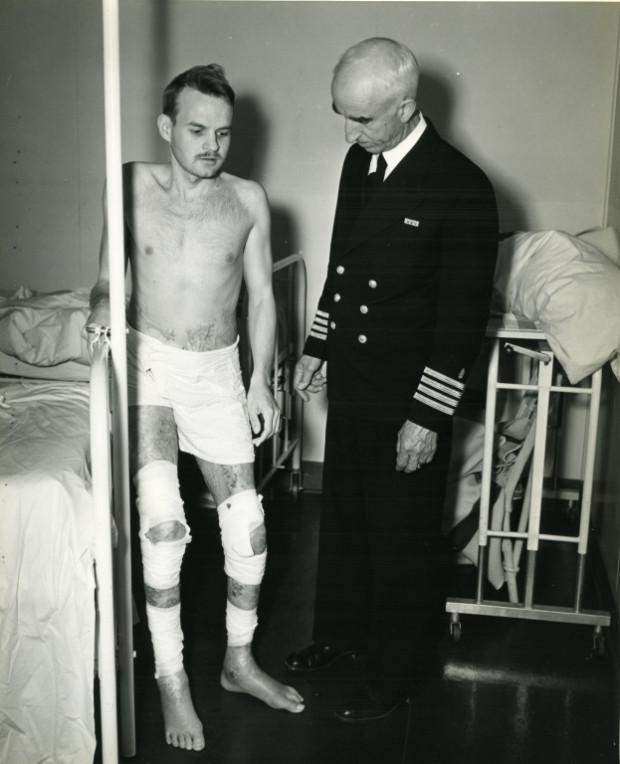
To test his theory, Stanley held a series of countries of operations, he surgically transplanted testicles recently executed criminals still alive prisoners. Due to insufficient number of eggs for experiments (average prison conducted three death penalty per year) Stanley soon began to use the testicles of various animals, which he treated with various fluids and then injected under the skin of prisoners.
Stanley said that by 1922 the ninth year spent similar operations on 600 subjects. He also claimed that his actions were successful, and described one particular case, as a prisoner aged Caucasian origin became cheerful and energetic after he transplanted the testicles of a young black man.
7. Shock therapy and LSD for detey
Lauretta Bender is best known, perhaps through the creation of a psychological Gestalt Test Bender assessing movement of the child and his ability to learn. However, Bender and takes a few more controversial research: as a psychiatrist at the hospital Bellevue in 1940, it is exposed daily for 98 child patients of shock therapy in an attempt to cure their condition called "childhood schizophrenia", which she herself came up with.

She said that the shock therapy has been highly successful, and that a relapse was observed subsequently in only a few children. It's like shock therapy was not enough, Bender also introduced children doses of LSD and psilocybin - a chemical found in hallucinogenic mushrooms, with doses of the drug would be a lot for an adult. Most children received one such shot in the week.
8. Experiment with syphilis Gvatemale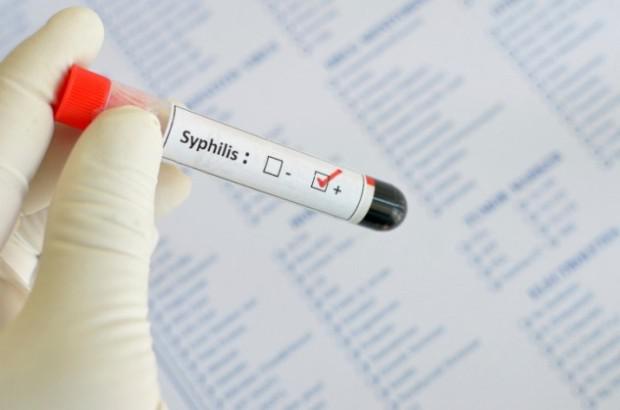
In 2010, the American public became aware of the highly unethical experiment with syphilis. The professor, who has studied the infamous Tuskegee syphilis study, found that the same health organizations also conducted a similar experiment in Guatemala. This revelation prompted the White House to form an investigative committee, and found that the government-sponsored researchers deliberately infected Guatemalans with syphilis in 1300 to 1946.
The study, which lasted two years, was to find out whether penicillin to be effective treatment for already infected patients. The researchers paid prostitutes so that they infect other people, mostly soldiers, prisoners and the mentally ill. Of course, men do not know that they want to deliberately infected with syphilis. A total of 83 people died of the experiment. These terrible results prompted President Obama to personally apologize to the president and the people of Guatemala.
9. Experiment to improve strength kozhi
A dermatologist Albert Kligman in 1960 experienced a comprehensive pilot program for prison inmates Holmsburg. One such experiment, sponsored by the US Army, has been directed to increase the strength of the skin. Theoretically, fortified skin could protect soldiers from chemical irritants in combat zones. Kligman applied various chemical creams and funds for the prisoners, but the only result was the emergence of numerous scars - and pain.
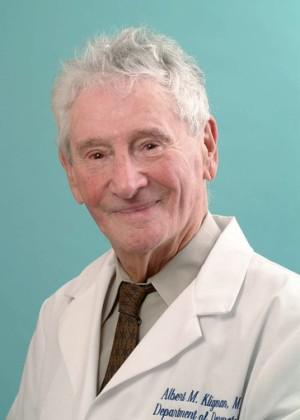
Pharmaceutical companies have also hired Kligman to test their products: they paid him for the fact that he used prisoners as hamsters. Certainly, volunteers paid too little, if any, but they were not fully informed of the possible adverse consequences. As a result, many chemical compounds led to occurrence of blisters on the skin and burns. Kligman was also completely ruthless man. He wrote: "When I came to the prison for the first time, all I saw before me - is the endless acres of skin».
In the end, public outrage and the subsequent investigation Kligman forced to stop their experiments and destroy all the information about them. Unfortunately, the former test compensation for the damage and did not provide, and later Kligman made a fortune by inventing Retin-A - a means to combat acne.
10. Experiments on lumbar puncture on children
Lumbar puncture, sometimes also called a lumbar puncture - often a necessary procedure, particularly neurological disorders and diseases of the spine. But the giant needle sticks directly into the spinal column, be sure to bring the patient excruciating pain.
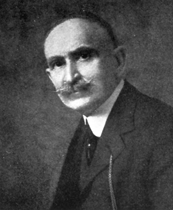
However, in 1896 a pediatrician Arthur Wentworth decided to check the obvious: during the experimental spinal puncture, which made the young girl, Wentworth noticed how patient cringed in pain during the procedure. He suspected that the operation was painful (at that time for some reason, it was believed that it does not hurt), but was not entirely sure. So he made a few more treatments - 29-year-infants and children toddlers.
In the end, he concluded that the procedure is painful, though, but, nevertheless, very useful, as it helps to diagnose the disease. Conclusions Wentworth colleagues received mixed reviews: some praised him, but one of the critics said that it is nothing more than a "vivisection". Growing public outrage about the experiments later forced Wentworth leave teaching job at Harvard Medical School.
via factroom.ru
However, the cases from our list - the exact opposite of this concept. We can only imagine the pain experienced by these people - for those who like to play God, they meant no more guinea pigs.
1. Treatment of madness surgical putёm

Dr. Henry Cotton believed that the fundamental causes of insanity are localized infections. Once in the 1907 Cotton became the head of the madhouse in Trenton, he began to practice the procedure called surgical bacteriology them: Cotton and his team have performed thousands of surgical operations on patients, often without their consent. First, they removed the teeth and tonsils, and if this is not enough, the "doctors" take the next step - removed the internal organs, which are, in their opinion, the source of the problem.
Cotton is so believed in his methods that resorted to it even on himself and his family, for example, he removed some teeth to himself, his wife and two sons, one of whom was also removed part of the colon.
Cotton claimed that his treatment was observed when a high percentage of recovery of patients, and that it just became a lightning rod for criticism of those moralists who found it appalling methods. The death of 49-year-colectomy when their patients, for example, Cotton justified by the fact that they have already suffered before the operation "end stage of psychosis." A subsequent independent investigation found that Cotton greatly exaggerated.
After his death in 1933, such operations are no longer carried out, and the point of view of the Cotton sank into obscurity. To his credit, the critics agreed that he was quite sincere in their attempts to help patients, though it did crazy fraudulently.
2. Vaginal surgery without anestezii

J. Marion Sims, revered by many as a pioneer in the field of American gynecology, in 1840 embarked on extensive research in the field of surgery. As a test, he used several women among the Negro slaves. The study took three years, was focused on the surgical treatment of vesicovaginal fistula.
Sims believed that the disease occurs when abnormal connecting the bladder to the vagina. But, strangely, he performed surgery without anesthesia. One subject, a woman named Anarcha, experienced as many as 30 such operations, which ultimately allowed Sims to prove their case.
It was not only horrific research conducted Sims, he also tried to treat the children of slaves, suffering from lockjaw - spasms of the masticatory muscles - shoemaking using an awl to break down, and then align them to the bones of the skull.
3. Random bubonic chuma

Richard Strong, a doctor and head of the Laboratory of Biological Filipinnskogo Research Bureau, made prisoners of Manila prison several vaccinations in an effort to find the ideal vaccine against cholera. In one of these experiments in 1906 he accidentally infected prisoners virus bubonic plague, which led to the death of 13 people. The government's investigation into the incident later confirmed this fact. It has been stated about the tragic accident: a bottle of vaccine mixed with the virus.
Strong after his fiasco at some time zalёg to the bottom, but six years later he returned to science and made prisoner another series of vaccinations, this time in search of a vaccine against the disease beriberi. Some study participants died, and survivors compensated for suffering by giving them a few packs of cigarettes.
Strong's notorious experiments were so inhuman and led to such disastrous consequences that later at Nuremberg Nazi defendants brought them as examples in an attempt to justify their horrific experiments.
4. slaves poured kipyatkom

This method can be regarded as torture rather than as a treatment. Dr. Walter Jones in 1840 recommended that the hot water as a cure for typhoid pneumonia - he spent several months testing his method on numerous slaves, suffering from the disease. Jones is described in detail, as one patient, 25-year-old man, stripped naked and forced to lie on his stomach on the ground, and then Jones poured on the patient's back about 22 liters of boiling water.
However, it was not the end: the doctor said that the procedure should be repeated every four hours, and perhaps that will be enough for the "restoration of the capillary circulation." Later, Jones said that in this way a lot cured patients and claimed that he never did anything personally. Nothing surprising.
5. Exposure to electric current directly to mozg

Although the idea of beat shock anyone to treat absurd in itself, a doctor from Cincinnati named Roberts Bartolou brought it to the next level: he sent an electric current discharge directly into the brain of one of his patients. In 1847 Bartolou treated patient named Mary Rafferty, suffering from ulcers in the skull - the plague literally had eaten part of the skull bones, and a woman's brain was visible through the hole.

With the permission of the patient Bartolou inserted electrodes directly into the brain and letting them discharge current, began to observe the reaction. He repeated the experiment eight times for four days. At first, it seemed Rafferty felt fine, but at a later stage of treatment fell into a coma and died a few days later.
Public reaction was so great that Bartolou had to leave and continue their work elsewhere. Later, he settled in Philadelphia and eventually received an honorable teaching position at Jefferson Medical College, proving that even a mad scientist can be very lucky in life.
6. transplantation testicular Leo Stanley, chief doctor of San Quentin from 1913 to 1951, the year was a crazy theory: he believed that the man who committed the crime, had low testosterone levels. According to him, raising the level of testosterone in the prisoners will lead to a decrease in criminal behavior.

To test his theory, Stanley held a series of countries of operations, he surgically transplanted testicles recently executed criminals still alive prisoners. Due to insufficient number of eggs for experiments (average prison conducted three death penalty per year) Stanley soon began to use the testicles of various animals, which he treated with various fluids and then injected under the skin of prisoners.
Stanley said that by 1922 the ninth year spent similar operations on 600 subjects. He also claimed that his actions were successful, and described one particular case, as a prisoner aged Caucasian origin became cheerful and energetic after he transplanted the testicles of a young black man.
7. Shock therapy and LSD for detey

Lauretta Bender is best known, perhaps through the creation of a psychological Gestalt Test Bender assessing movement of the child and his ability to learn. However, Bender and takes a few more controversial research: as a psychiatrist at the hospital Bellevue in 1940, it is exposed daily for 98 child patients of shock therapy in an attempt to cure their condition called "childhood schizophrenia", which she herself came up with.

She said that the shock therapy has been highly successful, and that a relapse was observed subsequently in only a few children. It's like shock therapy was not enough, Bender also introduced children doses of LSD and psilocybin - a chemical found in hallucinogenic mushrooms, with doses of the drug would be a lot for an adult. Most children received one such shot in the week.
8. Experiment with syphilis Gvatemale

In 2010, the American public became aware of the highly unethical experiment with syphilis. The professor, who has studied the infamous Tuskegee syphilis study, found that the same health organizations also conducted a similar experiment in Guatemala. This revelation prompted the White House to form an investigative committee, and found that the government-sponsored researchers deliberately infected Guatemalans with syphilis in 1300 to 1946.
The study, which lasted two years, was to find out whether penicillin to be effective treatment for already infected patients. The researchers paid prostitutes so that they infect other people, mostly soldiers, prisoners and the mentally ill. Of course, men do not know that they want to deliberately infected with syphilis. A total of 83 people died of the experiment. These terrible results prompted President Obama to personally apologize to the president and the people of Guatemala.
9. Experiment to improve strength kozhi

A dermatologist Albert Kligman in 1960 experienced a comprehensive pilot program for prison inmates Holmsburg. One such experiment, sponsored by the US Army, has been directed to increase the strength of the skin. Theoretically, fortified skin could protect soldiers from chemical irritants in combat zones. Kligman applied various chemical creams and funds for the prisoners, but the only result was the emergence of numerous scars - and pain.

Pharmaceutical companies have also hired Kligman to test their products: they paid him for the fact that he used prisoners as hamsters. Certainly, volunteers paid too little, if any, but they were not fully informed of the possible adverse consequences. As a result, many chemical compounds led to occurrence of blisters on the skin and burns. Kligman was also completely ruthless man. He wrote: "When I came to the prison for the first time, all I saw before me - is the endless acres of skin».
In the end, public outrage and the subsequent investigation Kligman forced to stop their experiments and destroy all the information about them. Unfortunately, the former test compensation for the damage and did not provide, and later Kligman made a fortune by inventing Retin-A - a means to combat acne.
10. Experiments on lumbar puncture on children
Lumbar puncture, sometimes also called a lumbar puncture - often a necessary procedure, particularly neurological disorders and diseases of the spine. But the giant needle sticks directly into the spinal column, be sure to bring the patient excruciating pain.

However, in 1896 a pediatrician Arthur Wentworth decided to check the obvious: during the experimental spinal puncture, which made the young girl, Wentworth noticed how patient cringed in pain during the procedure. He suspected that the operation was painful (at that time for some reason, it was believed that it does not hurt), but was not entirely sure. So he made a few more treatments - 29-year-infants and children toddlers.
In the end, he concluded that the procedure is painful, though, but, nevertheless, very useful, as it helps to diagnose the disease. Conclusions Wentworth colleagues received mixed reviews: some praised him, but one of the critics said that it is nothing more than a "vivisection". Growing public outrage about the experiments later forced Wentworth leave teaching job at Harvard Medical School.
via factroom.ru
The world's smallest guitar the size of a white blood cell
Spider vampire hunts mosquito sucking blood



